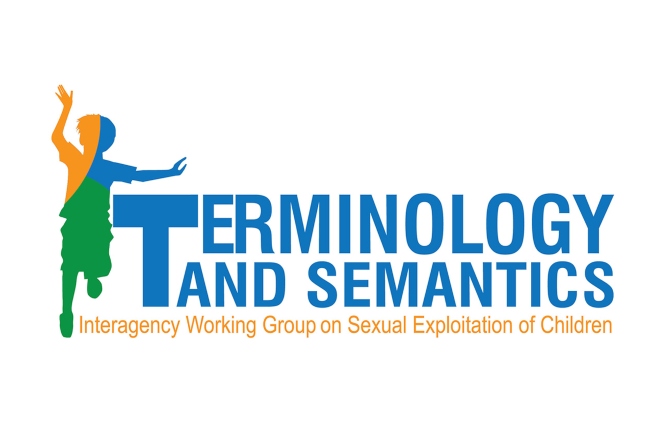Article
Educational Articles
‘Luxembourg Guidelines’ on terminology: A step forward in the fight against online and offline sexual exploitation of children
INHOPE and its members have long been advocates of better and more respectful terminology. Child sexual abuse material - which our hotline analysts across our network and across the globe work tirelessly to remove from the internet - is often referred to as 'child pornography' or other terms which trivialise the issue and minimise the seriousness of the abuse being depicted. INHOPE, as a member of the International Working Group, strongly supports the Luxembourg Guidelines to help streamline terminology and fight online child sexual abuse and exploitation.
On the 14th June, a Global Interagency Working Group released the ‘Terminology Guidelines for the Protection of Children from Sexual Exploitation and Sexual Abuse’ in Geneva Switzerland, taking an important step in strengthening collaboration to address sexual exploitation and sexual abuse of children.
Child sexual exploitation and sexual abuse are complex phenomena involving multiple actors, and requiring a multi-sectoral response. The absence of common language to describe conduct amounting to sexual exploitation and sexual abuse affects and undermines global efforts to protect children. “Even where the same terms are used, there is often disagreement concerning their actual meaning, resulting in confusion and challenges for law-makers, child protection agencies, media and civil society groups,” explained Dorothy Rozga, Executive Director of ECPAT International. In the context of transnational child sexual abuse and sexual exploitation, these difficulties are magnified.
The Terminology Guidelines, dubbed the ‘Luxembourg Guidelines’ after their adoption in Luxembourg earlier this year, offer guidance on how to navigate the complex lexicon of terms commonly used relating to sexual exploitation and sexual abuse of children. They aim to build consensus on key concepts in order to strengthen data collection and cooperation across agencies, sectors and countries. Today, the Guidelines are being made available to all major child protection agencies and organisations around the world, as well as to law-makers and the media.
The ‘Luxembourg Guidelines’ were developed under the guidance of a global Interagency Working Group, composed of 18 members, including the Special Representative to the UN Secretary General on Violence against Children, the UN Special Rapporteur on the Sale of Children, Child Prostitution and Child Pornography (see full list below).
“In these important guidelines, policymakers, professional associations and child rights defenders find a crucial resource to provide precision in terminology, enhance accuracy in the development of monitoring tools, and gain conceptual clarity to mobilise efforts for the safeguard of children's freedom from sexual violence across regions,” said Marta Santos Pais, the Special Representative to the UN Secretary General on Violence against Children, and core member of the Interagency Working Group.
“In the fight against sexual exploitation and sexual abuse of children, terminology is not just a matter of semantics: it determines the efficacy of responses,” said UN Special Rapporteur on Sale of Children, Child Prostitution and Child Pornography, Maud de Boer-Buquicchio. “The Luxembourg Guidelines will contribute not only to protecting children, but also in ending the impunity for these heinous crimes,” said the UN Special Rapporteur.
“Our hope is that the Guidelines will be widely disseminated and that all actors will familiarise themselves with the meaning and possible use of the terms and concepts presented in the Guidelines. We believe that by doing so they will contribute to a more effective protection of children from all forms of sexual exploitation and sexual abuse,” said Professor Jaap Doek, Chairperson of the Interagency Working Group. Coordinated by ECPAT, the Interagency Working Group deliberated over the course of 18 months, bringing together experts and international actors in child protection to forge consensus on the terminology used in child protection on sexual abuse and sexual exploitation.
The Interagency Working Group is composed of representatives from the following organisations:
- African Committee of Experts on the Rights and Welfare of the Child
- Child Rights Connect
- Council of Europe Secretariat
- ECPAT
- Europol
- INHOPE - The International Association of Internet Hotlines
- Instituto Interamericano del niño, la niña y adolescentes (OEA)
- International Centre for Missing and Exploited Children
- International Labour Organization
- International Telecommunication Organisation
- INTERPOL
- Office of the United Nations High Commissioner for Human Rights
- Plan International
- Save the Children International
- United Nations Committee on the Rights of the Child
- United Nations Special Rapporteur on the Sale of Children, Child Prostitution and Child Pornography
- United Nations Special Representative of the Secretary General on Violence against Children
- United Nations Children’s Fund (UNICEF)
The IWG also counted with two academic institutions, the London School of Hygiene and Tropical Medicine and the University of Bedfordshire, The International Centre: Researching child sexual exploitation, violence and trafficking, as well as the Oak Foundation as observers to project.
For more information, please visit the dedicated website www.luxembourgguidelines.org

Photo by INHOPE
'Child pornography' and other terms trivialise the issue and minimise the seriousness of the abuse being depicted.
'